What Does White Mean in Japanese Culture?
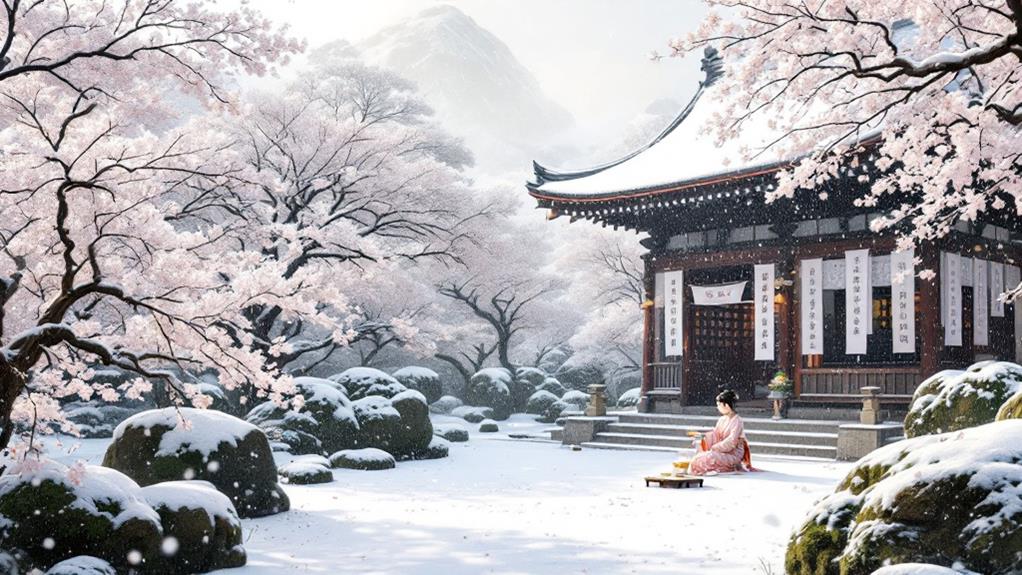
In Japanese culture, white signifies purity, simplicity, and spiritual depth. You'll find it in Shinto rituals, where it represents the sacred and divine. At weddings, white symbolizes new beginnings and commitment, with brides donning white kimonos. It's also key in funerals, signifying purity and a peaceful passage to the afterlife. White's presence in traditional attire underscores its ongoing cultural importance. Furthermore, white holds a special place in Japanese art and design, highlighting purity and balance. Embracing both tradition and modernity, white continues to influence numerous aspects of life. There's much more to this cultural significance than meets the eye.
Historical Significance of White
Throughout Japanese history, the color white has held profound meaning and symbolism, often representing purity, simplicity, and new beginnings. As you investigate the past, you'll find white's significance deeply embedded in diverse aspects of Japanese culture. White purity isn't just a concept but a way of life that has been revered for centuries. In ancient times, white was associated with the sacred and the divine, reflecting a connection to the spiritual dimension. This association with white spirituality was evident in traditional clothing and ceremonial robes, often worn during significant rituals and events. The principles of harmony and respect, emphasized in traditional practices such as the Japanese tea ceremony, also align with the values symbolized by the color white. You might notice how white's symbolism extends beyond clothing. In the Heian period, white paper was used for poetry and calligraphy, signifying an untainted canvas for pure artistic expression. Even in architecture, white surfaces were favored for their clean and minimalist aesthetic, embodying simplicity and clarity. The historical significance of white also found its way into Japanese literature, where it often symbolized untouched beauty and innocence. By understanding this rich history, you're better equipped to appreciate how deeply the color white is woven into the fabric of Japanese culture, revealing layers of purity and spirituality that continue to resonate today.
White in Shinto Practices

Exploring the role of white in Shinto practices reveals another dimension of its cultural significance. In Shinto, white symbolizes purity and the sacred, playing an essential role in rituals and ceremonies. When you participate in a Shinto purification ritual, you'll notice the prominence of white garments, such as the shiro shōzoku, worn by priests. This attire emphasizes the purification process, helping to cleanse both the spiritual and physical domains. The integration of cultural values into such practices improves the spiritual significance of these rituals. During these ceremonies, white offerings are also significant. You might see white rice, salt, or paper used as offerings to the kami, or spirits. These offerings symbolize purity and respect, reinforcing the fundamental tenets of Shinto beliefs. The use of white paper, known as shide, often adorns sacred spaces, acting as a conduit between the physical and spiritual worlds.
Symbolism of White in Weddings

In Japanese weddings, the color white holds profound symbolism, representing purity, new beginnings, and the sacred union of two souls. When you attend a traditional Shinto wedding, you'll notice the bride's stunning white wedding attire, often a kimono called "shiromuku." This garment is not just a fashion statement; it embodies white symbolism meanings that are deeply rooted in Japanese culture.
As the bride wears white, she's seen as a blank canvas, ready to initiate a new life adventure with her partner. This idea of purity and fresh starts is central to the wedding ceremony. The color white also signifies a sacred space, where the couple's bond is blessed and honored. In this situation, white transcends its visual appeal and connects with cultural values and emotions.
When you think about the groom, he often wears a "montsuki," a formal kimono that complements the bride's attire. While it's not entirely white, the focus remains on unity and harmony. The use of white in wedding ceremonies symbolizes the couple's commitment to build a shared life, embracing the purity and promise that comes with a new beginning together.
The Role of White in Funerals
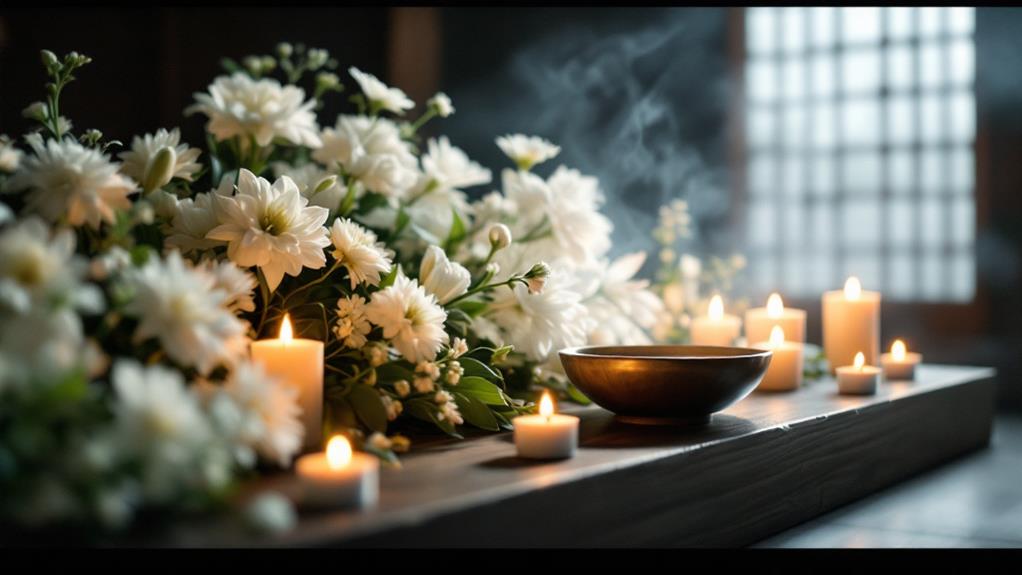
White holds a significant role in Japanese funerals, symbolizing purity and the passage to the afterlife. When you attend a Japanese funeral, you'll notice that white is prominently featured in the attire and rituals. This color choice is deeply rooted in the belief that white represents a clean slate and a spiritual cleansing as the deceased moves into the next world.
White funeral attire is commonly worn by the family of the deceased. You'll see them dressed in white kimonos or other traditional garments, which signifies their mourning and respect. The use of white extends beyond just clothing; it's also present in the floral arrangements and other ceremonial elements at the funeral. These white mourning customs are meant to convey a sense of solemnity and peace, helping the family and attendees honor the deceased's passage.
You may also observe that mourners often carry white envelopes containing condolence money, further reflecting the significance of white in these customs. By embracing white, the ceremony becomes a serene farewell, emphasizing purity and the hope for a peaceful afterlife. White, in this situation, becomes a powerful expression of love, loss, and remembrance.
White in Traditional Attire

Beyond its significance in funeral customs, the color white also plays a prominent role in traditional Japanese attire. When you think of a classic Japanese wedding, the image of a bride in a white kimono likely comes to mind. This white kimono, known as "shiromuku," symbolizes purity and the start of a new experience. It's adorned with intricate designs and often paired with a white hood, enhancing the bride's elegance.
In addition to bridal wear, you might notice the white haori, a traditional jacket worn over kimono. Historically, men and women wore these white haori during significant ceremonies and rituals. The color white in this situation signifies formality and respect for tradition. When you see a person wearing a white haori, it's often during events that hold cultural importance, like tea ceremonies or formal gatherings.
White also appears in the attire of religious figures, such as Shinto priests, who wear white garments to denote purity and a connection to the spiritual world. The use of white in these traditional garments highlights its cultural symbolism, emphasizing its continued relevance in diverse ceremonies and rituals in Japan.
Modern Interpretations of White
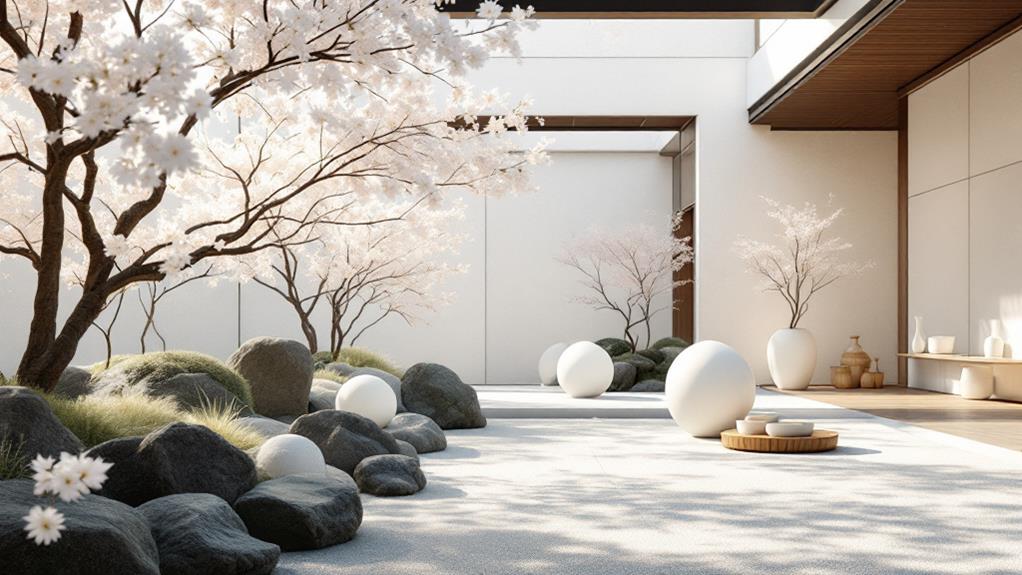
Influence and adaptation shape how the color white is perceived in modern Japanese culture. You'll notice that white fashion epitomizes simplicity and elegance, often seen in minimalist clothing styles that reflect purity and sophistication. In Japan, wearing white can convey a sense of serenity and understated beauty. Many fashion brands incorporate white as a staple in their collections, offering pieces that can be effortlessly chic and versatile. You might find that combining white with other colors creates striking contrasts, enhancing the overall aesthetic appeal.
In the domain of white technology, Japan stands as a leader. White is frequently associated with cleanliness and innovation in gadgets and appliances. You'll see that Japanese tech companies design sleek, white electronic devices that are not only functional but also visually appealing. These products can range from smartphones to home appliances, all embracing the color white to highlight modernity and efficiency. By integrating white into technology, Japan continues to influence global trends, offering products that blend style with cutting-edge technology. As you investigate these modern interpretations, you'll recognize how white remains a significant and dynamic part of Japanese cultural evolution.
White in Japanese Art and Design
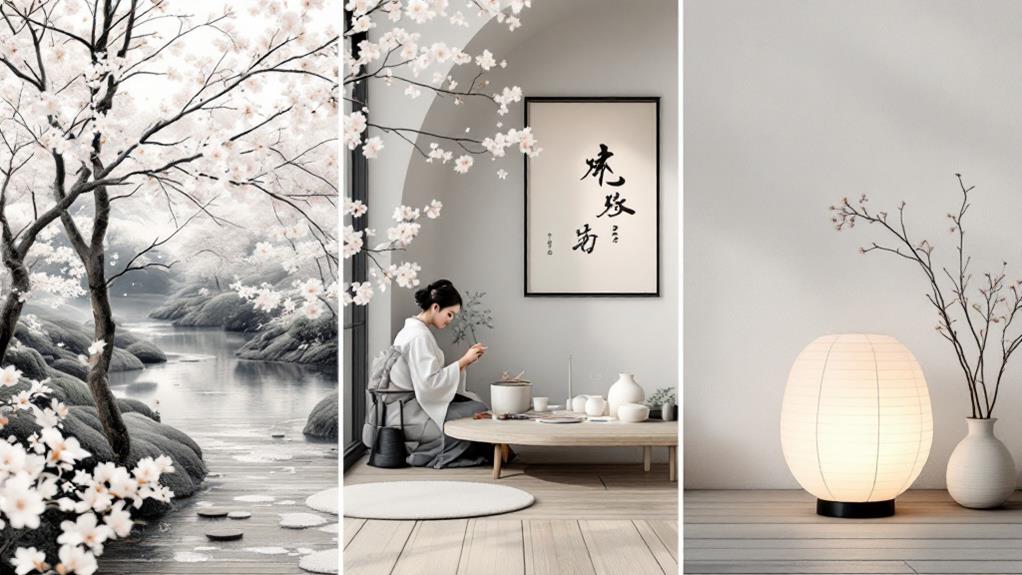
In Japanese art and design, the color white plays an essential role, often symbolizing purity, balance, and space. You'll find that white is an integral part of creating white aesthetics, a concept that welcomes simplicity and minimalism. By using white, artists and designers can highlight subtle details and create a sense of calm and tranquility in their work. This approach is deeply rooted in traditional Japanese philosophies, such as Zen, which emphasize the beauty of simplicity and the power of empty space.
Consider these key aspects of white in Japanese art and design:
- Minimalist design: White serves as a foundational element, allowing other colors and forms to stand out without distraction.
- Calligraphy and ink painting: The contrast of black ink on white paper emphasizes the elegance and precision of each brushstroke.
- Architecture and interiors: White is often used to create serene and uncluttered spaces, reflecting light and enhancing the sense of openness.
- Ceramics and pottery: White glazes highlight the form and texture of the piece, drawing attention to its craftsmanship.
Cultural Perceptions of White Today
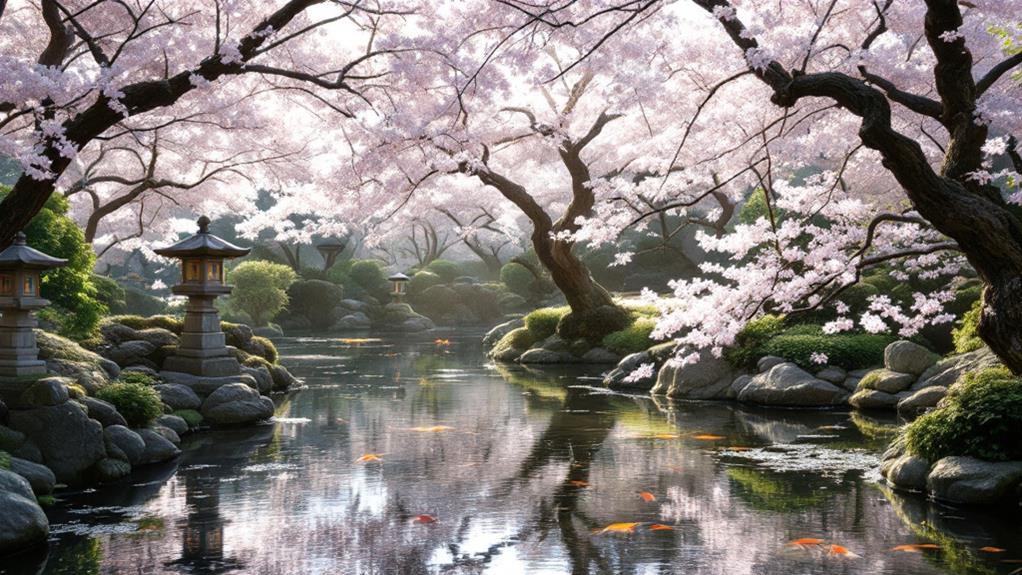
Today, the color white continues to hold significant cultural value in Japan, embodying both traditional and modern interpretations. You might notice how white is often associated with purity, simplicity, and new beginnings. These cultural associations are deeply rooted in historical practices, such as the use of white in Shinto rituals and ceremonies. When you see a bride in a white kimono, it symbolizes purity and a fresh start, reflecting these ancient traditions.
In modern contexts, the color white is similarly influential. It's prevalent in minimalist design, which emphasizes clean lines and uncluttered spaces. This aesthetic choice isn't just about appearances; it also carries psychological effects. White interiors can evoke feelings of calmness and tranquility, offering a mental respite from the chaos of everyday life. You'll find that many Japanese homes and offices incorporate white to create a serene environment.
Moreover, white is used in technology and branding, representing innovation and modernity. When you engage with Japanese technology, you might notice this sleek, white design, which suggests sophistication and cutting-edge advancement. In general, white continues to bridge the past and present, maintaining its cultural significance.



